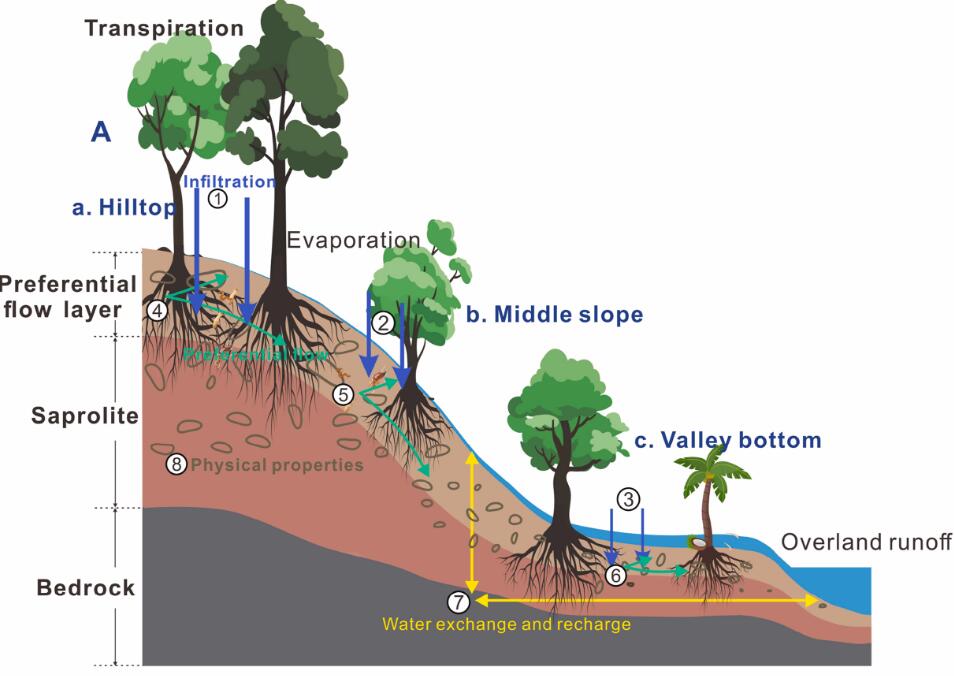The hillslope is an essential natural spatial gradient that influences hydrological processes. Most studies support the idea that infiltration and preferential flow can diversify the water supply to plants. However, few studies have assessed the effect of hillslope location and orientation on soil hydrological functions and services, such as water infiltration, storage, and regulation, in the humid tropical forests.
In a study published in Journal of Environmental Management, researchers from Xishuangbanna Tropical Botanical Garden (XTBG) tried to reveal the effect of hillslope on soil hydrological functioning, including water distribution and exchange, infiltration capacity (initial infiltration rate, saturated hydraulic conductivity, average infiltration rate) and flow behavior in the humid tropical region. They further tried to identify the water supply mechanisms and ascertain hydrological characteristics of different slope positions.
The researchers conducted 36 field infiltration and nine dye-tracer investigations of different hillslope locations in the natural rainforest of Xishuangbanna, having a typical humid tropical climate.
Preferential flow indices, infiltration time, and dye stain patterns showed a clear trend of decline from hilltops to middle slope and valley bottom. Not only hillslope position but also other factors, such as soil type or properties, could also affect preferential flow behaviors.
Furthermore, soil infiltration capacities varied with slope positions at different elevations, vegetation coverage, and soil physicochemical properties. The soil hydraulic conductivities decreased with decreasing slope elevation (from the hilltop to the middle slope and valley bottom). The spatial variation in water infiltration capacity at different hillslope positions can be attributed to differences in soil physical properties.
The dyed water infiltration time significantly increased with decreasing elevation from hilltop to middle slope and valley bottom.
“It indicated that the hilltop has a higher potential to infiltrate the rainfall during the rainy season, whereas the valley bottom has a poor drainage discharge capacity,” said CHEN Chunfeng, first author of the study.
Moreover, the preferential water flow parameters were positively correlated with the infiltration capacity, suggesting the preferential water paths could facilitate the movement of water in soil profiles and accelerate water redistribution in the hillslope.
“Our results suggest that hillslopes play a key role in soil hydrological functions and services in tropics,” said LIU Wenjie, principal investigator of the study.
Contact
LIU Wenjie Ph.D Principal Investigator
Key Laboratory of Tropical Forest Ecology, Xishuangbanna Tropical Botanical Garden, Chinese Academy of Sciences, Mengla, Yunnan 666303, China
E-mail: lwj@xtbg.org.cn

Schematic diagram illustrating the effects of hillslopes on the hydrological processes in the rainy season. (Image by CHEN Chunfeng)

